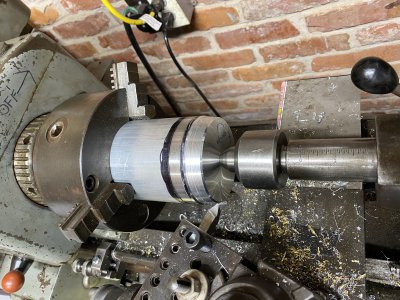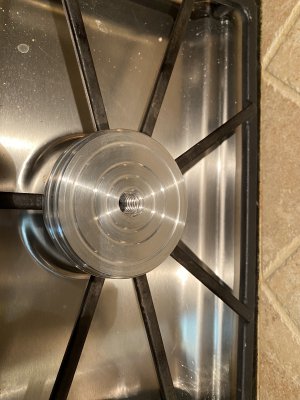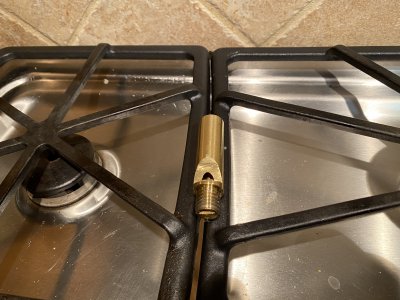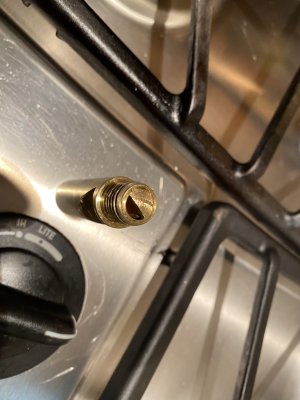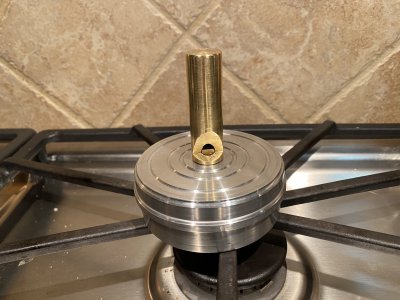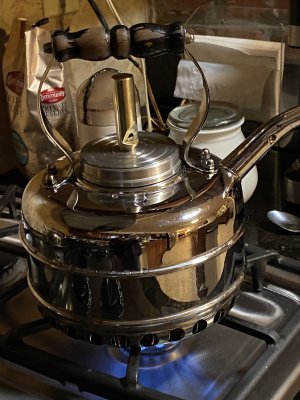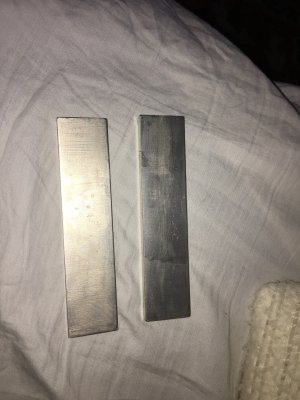Well, the old Simplex Tea Kettle just had a sick sounding whistle. I could still hear it but I must admit, I had to pay attention plus my hearing is still pretty good. But, my mom’s hearing is bad. I noticed that the other day she put my great kettle on the side and was using her old crappie kettle which I will admit did still have a good whistle.
So I started thinking. Could I make a new whistle and top for the old Simplex.
here’s a pic of the starting point of the Simplex Kettle.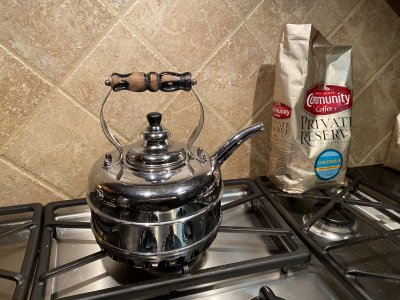
So I started thinking. Could I make a new whistle and top for the old Simplex.
here’s a pic of the starting point of the Simplex Kettle.


